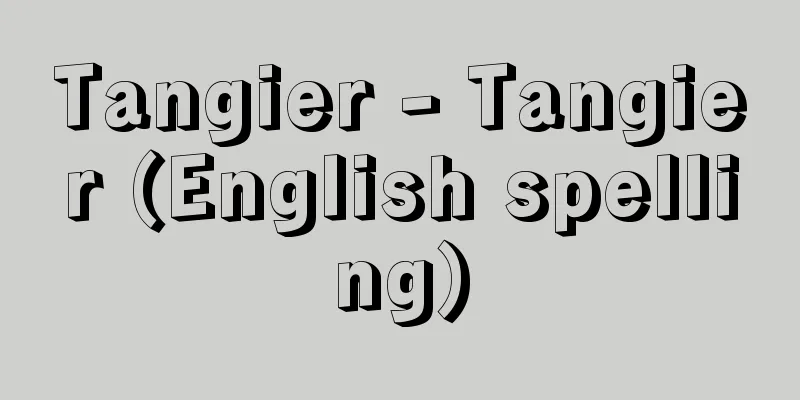Georges Rouault

|
French painter and printmaker. Along with Picasso and Matisse, he is one of the most important painters of the 20th century. Born in Paris on May 27th as the son of a furniture maker. From 1885, he apprenticed at a stained glass restoration studio, while studying at night courses at the School of Decorative Arts. In 1890, he decided to devote himself to painting, and studied under Elie Delaunay at the École des Beaux-Arts, and from 1892, he studied under Gustave Moreau, Delaunay's successor. He was recommended by Moreau to win the Prix de Rome, but failed twice. After dropping out of school, he entered a monastery in Liguger, where he met Huysmans and others, and cultivated his inner and religious feelings. After Moreau's death in 1898, he served as director of the Moreau Museum, which was established in his former home, and participated in the founding of the Salon d'Automne in 1903. From this time on, Rouault abandoned the essentially academic subject matter and painting style of his apprenticeship. During this early period leading up to the First World War, influenced by the works of his respected teacher Moreau, he mainly used watercolors, with broad, dynamic brushstrokes and a predominantly blue color scheme, to paint subjects such as clowns, prostitutes, judges, and the poor in the suburbs, expressing his anger and sadness at social injustice. His most famous works include "Prostitute at the Mirror" (1906, Musée National d'Art Moderne, Paris). The strength of his brushstrokes and the expressiveness of his colors make them similar to the Fauvism of the same period, or Picasso's "Blue Period," but they also have a unique spirituality and can be seen as a manifestation of Expressionism in France. In 1917, he signed an exclusive contract with the art dealer Vollard, and thereafter spent most of his time working on a series of prints, such as "Miserere" (produced 1917-27, published 1948). Rouault's mid-period work, which focused on oil painting, also began around this time. He continued to paint subjects such as prostitutes, clowns, and judges, using techniques such as the use of broad brushstrokes to remove shading, which he had acquired through his mastery of printmaking techniques, and the intense application of thick layers of transparent green, blue, and brown paints. However, unlike his early works, which depicted the sin and despair of his earlier works, he painted quiet inner worlds. In particular, from the 1930s onwards, there were more Christian themes, which often combined with themes such as clowns, judges, and suburban areas, transforming into a world of salvation and grace, and Rouault's world as a true religious painter was established after the Middle Ages and the Renaissance. His representative works include "Veronica" (1945, Musée National d'Art Moderne, Paris). Other notable works include the stained glass designed for the church in Achy in eastern France in 1945. In his later works from around 1952, the themes became more diverse, and the colors more red and yellow, which, combined with the depth of the material, create a radiant sparkle. After Vollard's death, Rouault filed a lawsuit to recover his unfinished older works, and in 1948, he had 315 of them burned, an incident that speaks to his perfectionism. He died in his home in Paris on February 13, 1958, and was given a state funeral. He produced a series of prints, such as "The Circus of the Falling Star" (1938) and "Passion" (1939), as well as the lithograph-illustrated books "Private Memories" (1925) and "Soliloquy" (1944). After his death, about 200 of his unfinished works were donated to the Musée National d'Art Moderne in Paris. [Kimio Nakayama] "Rouault, commentary by P. Courtillon, translated by Nakayama Kimio (1976, Bijutsu Shuppansha)" ▽ "Rouault, by B. Dorival, translated by Takashina Shuji (1961, Bijutsu Shuppansha)" ▽ "Complete Works of Contemporary World Art 12: Rouault, commentary by Yanagi Sogen (1972, Shueisha)" ▽ "Complete Rouault Prints, catalogued by Isabelle Rouault, translated by Yanagi Sogen et al. (1979, Iwanami Shoten)" ▽ "Rouault, by Takada Hiroatsu and Mori Arimasa (1976, Chikuma Shobo)" Source: Shogakukan Encyclopedia Nipponica About Encyclopedia Nipponica Information | Legend |
|
フランスの画家、版画家。ピカソ、マチスたちとともに20世紀を代表する画家の1人。5月27日、パリに家具職人の息子として生まれる。1885年からステンドグラス修復の工房に徒弟修業し、かたわら装飾美術学校の夜間コースに学ぶ。90年、絵画に専念することを決意し、エコール・デ・ボーザールのエリ・ドローネーの教室に学び、92年よりドローネーの後任ギュスターブ・モローの教えを受ける。モローの推挙でローマ賞を志すが二度にわたり失敗、学校をやめたあとリギュジェの修道院に入り、ここでユイスマンスたちと知り合い、内面的、宗教的な感情を養う。98年のモロー没後に旧宅に設置されたモロー美術館の館長を務め、1903年のサロン・ドートンヌの創立に参加。このころからルオーは、修業時代の基本的にはアカデミックであった主題と画法を捨てる。この、第一次世界大戦前後に至る初期には、尊敬する師モローの作品の影響下に水彩を主とし、幅の広い動的な筆触、青を基調とする色彩に託して、社会的な不正義に対する怒りと悲しみを、道化、娼婦(しょうふ)、裁判官、郊外の貧しい人々などの主題で描く。『鏡の前の娼婦』(1906・パリ国立近代美術館)などがその代表作。それらは筆触の強さ、色彩の表現性で、同時期のフォービスム、あるいはピカソの「青の時代」と類縁性をもつが、独自な精神性を備え、フランスにおける表現主義の表れとみることができる。 1917年、彼は画商ボラールと専属契約を結び、以後、『ミセレーレ』(1917~27制作、1948刊)などの連作版画集に制作の大半の時間を費やしている。油彩を中心とするルオーの中期の制作もこのころに始まる。版画技法の習熟から得た広い筆触による隈(くま)取り、透明感のある緑・青・褐色を厚塗りする激しいマチエールなどの手法が用いられ、引き続き娼婦、道化、裁判官などの主題が描かれるが、初期における罪、絶望の表現とは異なり、静かな内面的世界が描かれる。とくに、30年代以降、キリスト教的なテーマが多くなり、それらが、しばしば道化、裁判官、郊外などのテーマと合体し、救済と恩寵(おんちょう)の世界へと転換してゆき、中世、ルネサンス以降、真の意味での宗教画家としてのルオーの世界が成立する。代表作は『ベロニカ』(1945・パリ国立近代美術館)など。45年のフランス東部のアッシーの教会のためのステンドグラスなども注目される。 1952年ごろからの晩年の作品は、主題も多様化し、色彩も赤、黄色などが多くなり、マチエールの深さと相まって輝くようなきらめきを生んでいる。ボラールの死後、訴訟を起こして未完の旧作を取り戻し、48年にはそのうち315点を焼くという、ルオーの完全主義を物語る事件もあった。58年2月13日パリの自邸に没し、国葬が行われた。 連作版画集『流星のサーカス』(1938)、『受難』(1939)などのほか、リトグラフ挿絵入りの『私的な思い出』(1925)、『独言』(1944)の著作もある。死後未完の作品約200点がパリ国立近代美術館に納められた。 [中山公男] 『P・クールティヨン解説、中山公男訳『ルオー』(1976・美術出版社)』▽『B・ドリヴァル著、高階秀爾訳『ルオー』(1961・美術出版社)』▽『柳宗玄解説『現代世界美術全集12 ルオー』(1972・集英社)』▽『イザベル・ルオー目録作成、柳宗玄他訳『ルオー全版画』(1979・岩波書店)』▽『高田博厚・森有正著『ルオー』(1976・筑摩書房)』 出典 小学館 日本大百科全書(ニッポニカ)日本大百科全書(ニッポニカ)について 情報 | 凡例 |
<<: Luo people - Luo (English spelling)
>>: Ruellia (English spelling)
Recommend
Seasonal Nursery - Kisetsu Takujisho
...This project was incorporated into the charita...
Outer moon - Gaieisei
… [The Moon as a satellite] The Moon is the only ...
Katsuragi Shrine
...The name Kanegōzan comes from this mountain na...
Shodoshima
The second largest island in the Seto Inland Sea,...
Enterprise-specific unions
A labor union with a company as its organizationa...
Bund (English spelling)
A Jewish social democratic organization in the for...
Guillaume de Moerbeke
A Dominican monk from Flanders, from around 1215 t...
Buttercup - Buttercup
A perennial plant of the Ranunculaceae family (AP...
Cooperative phenomenon
This is also called a cooperative phenomenon. The...
Voiced consonant - dakuon
In Japanese, voiced consonants are syllables (moi...
Bureaucratic politics model
Intragovernment politics. One of the three models ...
Stock purchase rights
…A bond that is given the right to purchase share...
《Hanjō Shinbun》 - Kanjō Shinbun
...After that, the newspaper was often suspended ...
odeum
…a building used for singing and music in the Gre...
Lycaenidae (Cuttlefish/Small Gray Butterfly) - Lycaenidae
A general term for insects belonging to the Lepido...









